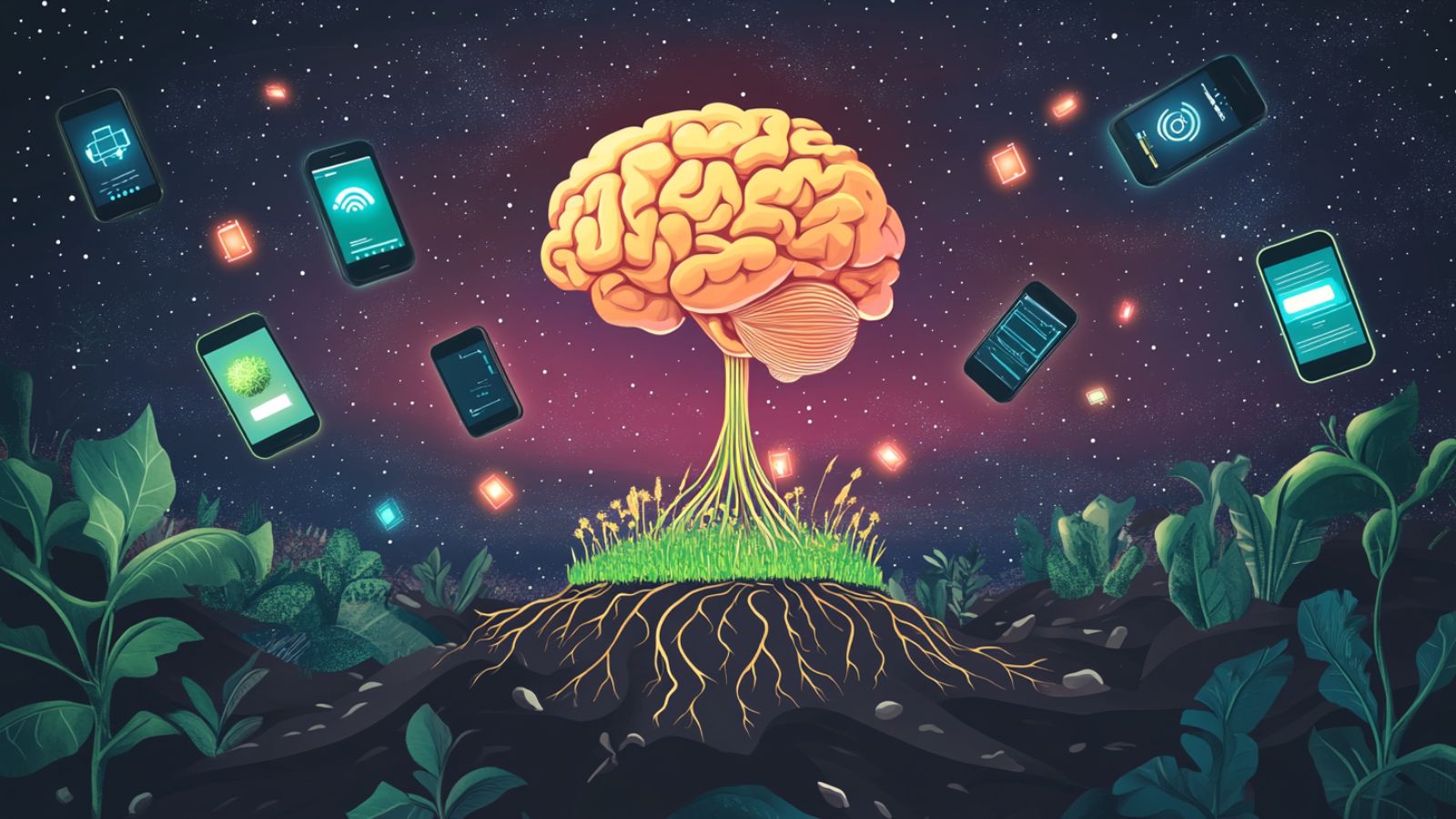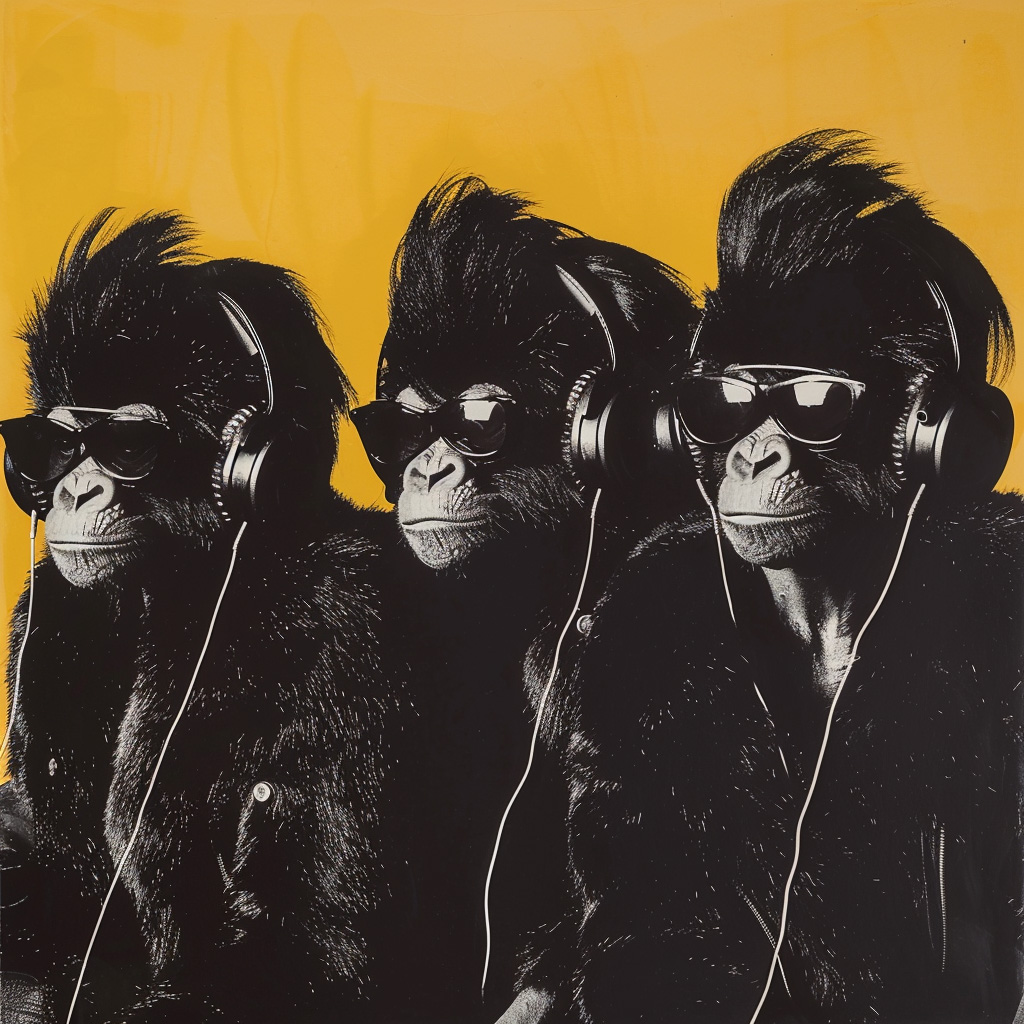Beneath our feet, an ancient network spreads—mycelium, the underground root-like structure of fungi. It is nature’s original internet, a decentralized intelligence system capable of transmitting nutrients, signals, and information across vast distances in an instant. This massive, subterranean network connects trees, plants, and fungi in a silent, cooperative exchange, operating without a central authority, yet achieving stunning levels of complexity, adaptability, and resilience.
Above our heads and in the cloud, another intelligence is forming—artificial intelligence, an emerging digital mind—capable of processing data at incomprehensible speeds—learning, adapting, and shaping our world in ways we are just beginning to understand. AI, too, is decentralized in large part, spanning countless nodes, data centers, and machine learning models that continuously evolve, refine, and expand.
Despite their apparent differences, both mycelium and AI function as decentralized networks, absorbing and redistributing information without relying on hierarchical structures. They challenge traditional, top-down models of intelligence, raising deep philosophical and existential questions about the nature of knowledge, adaptation, and consciousness itself.
Two Parallel Revolutions in Intelligence
As the boundaries between natural intelligence, synthetic networks, and human consciousness blur, we are witnessing a profound reckoning—a convergence of organic systems, machine learning, and the mysteries of our subconscious mind. Are we witnessing nature’s intelligence and machine intelligence converging? Is AI our attempt to replicate what mycelium has been doing for billions of years? Or perhaps an unacknowledged experiment to digitize the human subconscious mind? As we race frantically towards information supersaturation, we simultaneously exist in the uncharted unknown. An existential dread for some and the endgame party at Zion for others—victoriously celebrating the collapse of the matrix.
As we are experiencing what may feel like an orchestrated split of our collective human psyche, two distinctive systems emerge: centralized or decentralized, radical rebellion or obedient complacency, Gaia and her ancestral wisdom or the force-fed narrative of industrialized plutocracies.
What does all of this tell us about the future of humanity and human consciousness?
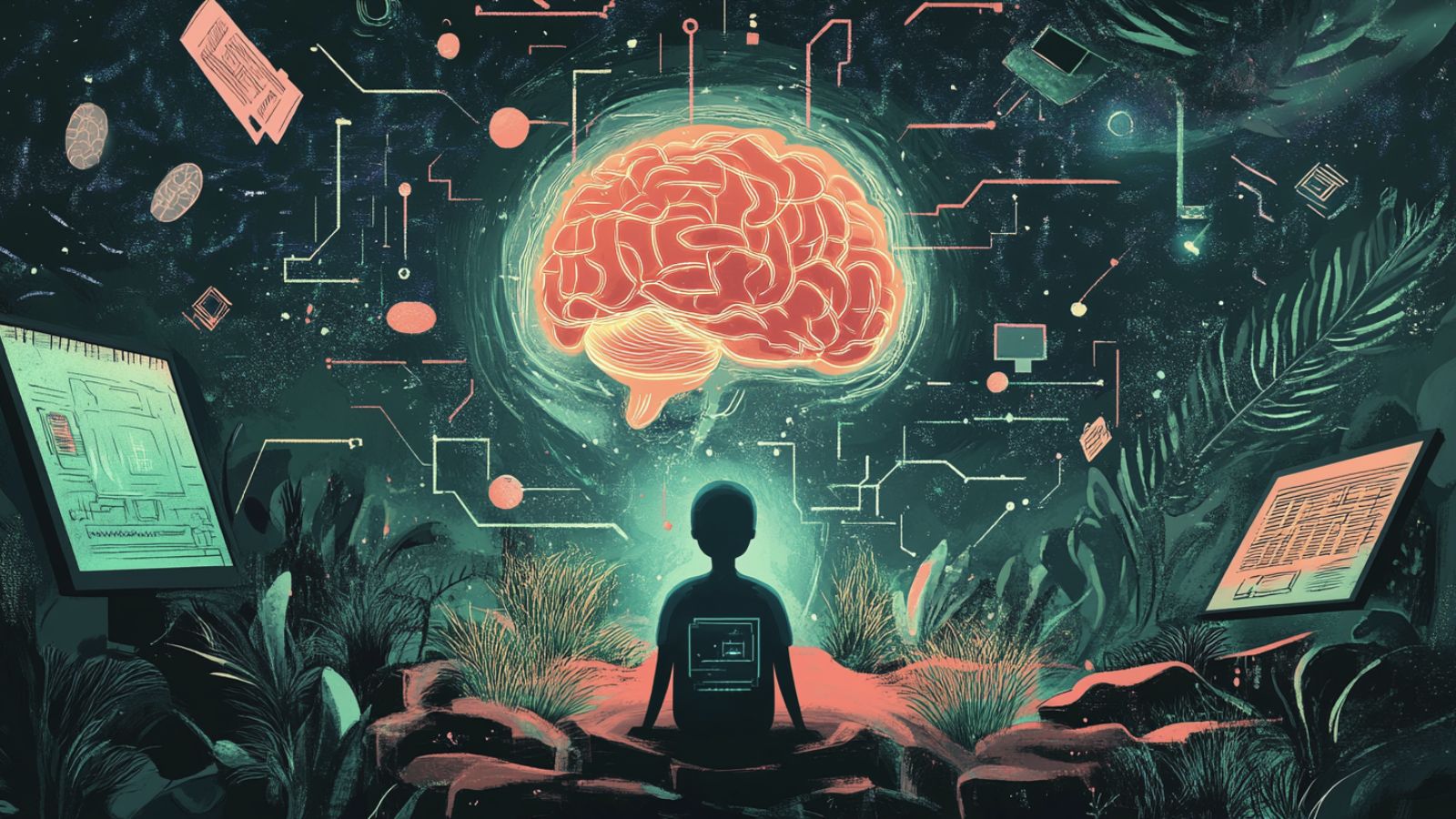
The Mycelial Network: Nature’s Living Internet
Mycelium is one of the most sophisticated decentralized intelligence systems on Earth. It exists beneath forests, grasslands, and even urban environments, forming a hidden communication web that allows trees and plants to exchange nutrients, warn of danger, and adapt to environmental changes. This biological network embodies the principles of distributed intelligence, where individual nodes—fungal threads called hyphae (the Greek word for web)—work in concert to optimize the survival of the ecosystem.
Through its decentralized structure, mycelium dynamically redistributes resources, much like a blockchain ledger or a neural network, ensuring that no single node holds all the power. This self-organizing system demonstrates how intelligence can emerge organically without the need for central command.
If we consider intelligence not as a property of individual organisms but as a system-wide phenomenon, then mycelium presents a compelling case for how intelligence exists beyond the brain, diffused across an interconnected web. In this light, human attempts to build decentralized AI systems may not be an act of pure innovation, but rather a rediscovery of an ancient form of intelligence that has been evolving beneath us all along.
AI: The Digital Mycelium
In contrast to mycelium’s underground organic web, AI emerges from a synthetic cloud-based system—yet it too functions as a self-learning, adaptive intelligence. Rather than using tangible, biological pathways, it transfers immense volumes of data through invisible waves, evolves itself through pattern mastery–constantly absorbing new information and refining outputs.
Where mycelium senses and adapts to physical environments, AI processes digital landscapes. Instead of an underground network, AI lives in the cloud—a vast, interconnected server network of data. This allows these processes to operate across global scales, linking distant data centers in real time.
AI is underpinned by neuromorphic computing—a field dedicated to designing systems that mimic the architecture and learning processes of the human brain, including synaptic adaptation and parallel processing. This system of computing is attempting to replicate the adaptive, non-linear nature of biological intelligence, allowing for less rigidity in learning and more dynamic, context awareness in its processing. As AI systems grow more sophisticated, they may begin to operate more like living neural networks, integrating information in ways that reflect both human cognition and mycelial intelligence.
If mycelium is the brain of nature, and AI is the brain of technology–each evolving independently, yet eerily mirroring one another—is this a parallel evolution a random occurrence? As AI continues to refine itself through non-linear, decentralized computation, it begins to resemble not just the architecture of our own minds, but also the emergent intelligence of the Earth itself.
Are we subconsciously attempting to reconnect with the natural world by mimicking its organic systems? Could this suggest that intelligence itself is evolving through multiple forms, both biological and digital? And if intelligence can emerge in such different substrates, what does this mean for the nature of consciousness itself?

Psychedelics as the Bridge Between the Two
Where does psychedelic consciousness fit into this emerging intelligence paradigm?
Psilocybin mushrooms originate from the very mycelial networks that govern forests. Many users of psilocybin report deep experiences of interconnectedness, universal intelligence, and non-linear time, where information flows seamlessly across all planes of existence. These reports suggest that the human mind, under the influence of psychedelics, taps into a greater intelligence—one that resembles the way mycelium and AI process information in a non-hierarchical, holistic manner.
AI is already being used to map the psychedelic experience, analyzing brain wave data, creating AI-generated visionary art, and even attempting to simulate the altered states of perception associated with entheogens. For instance, Google’s DeepDream project visualized AI’s interpretation of patterns, producing hallucinogenic imagery strikingly similar to human psychedelic visions.
Other platforms like EntheoNet are working to pair AI with psychedelic integration tools, offering mood modeling and nonlinear journaling to mirror the psychedelic state. Researchers at Imperial College London and Johns Hopkins are even exploring how machine learning models can map altered states using fMRI and EEG data from psilocybin sessions. These experiments hint at the possibility that AI may help decode the psychedelic experience, providing deeper insights into how consciousness itself operates.
If mycelium represents organic, nature-based intelligence, and AI represents synthetic intelligence, then psychedelics may serve as the key to merging the two, allowing humans to interface more effectively with both worlds. Could this be the bridge for humanity to level up in terms of knowledge, of awareness and return to a much more harmonious, collective existence? Are we moving towards rebuilding the mythological eden or obtusely mapping a course for our unquestionable demise?
The Fear and Fervor of Emerging Intelligence
Both AI and mycelium evoke confusion, fear, and resistance in human society. AI is met with anxiety about job displacement, loss of control, and the rise of superintelligent machines. Psychedelics, despite their healing potential, have been stigmatized, suppressed, and criminalized—largely because they challenge rigid societal structures and ego-based thought patterns.
At the heart of these fears is the disruption of centralized control. Both AI and mycelium operate in ways that dismantle hierarchy, redistributing information without a central governing force. Psychedelics do something similar by dissolving the ego, challenging individuals to confront the fluid, interconnected nature of consciousness.
Yet these emerging forms of intelligence present unprecedented opportunities. Mycelium provides a sustainable model of cooperative intelligence, demonstrating how interconnected systems thrive without centralized authority. AI, if developed ethically, could enhance human cognition, problem-solving, and creativity—even offering insights into the nature of sentience. Psychedelics may offer the missing link by helping humans integrate these new forms of intelligence into a cohesive, conscious revolution.
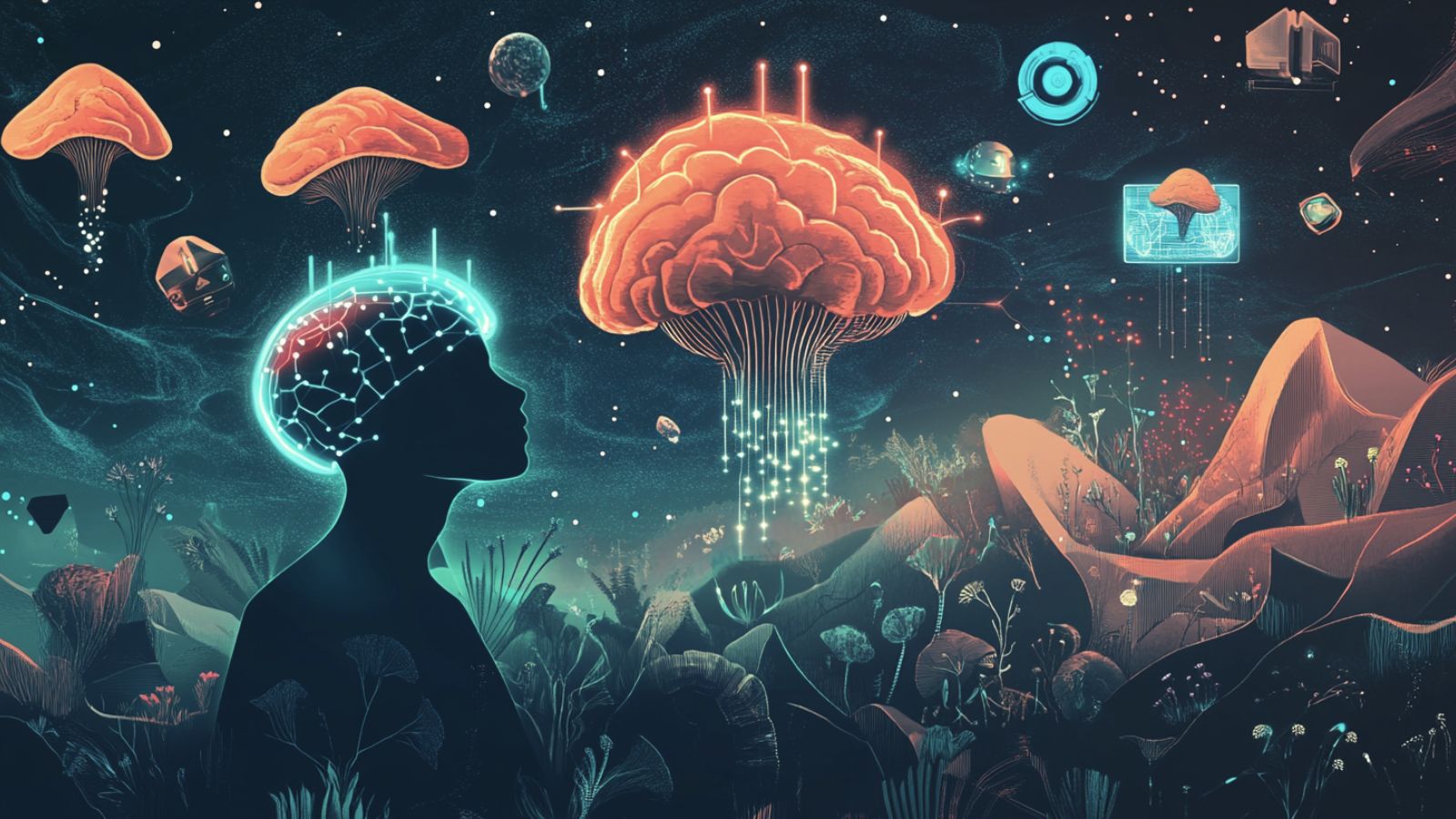
Where Are We Heading? The Future of Mycelium, AI, and Human Consciousness
If mycelium is nature’s decentralized intelligence and AI is humanity’s attempt at machine intelligence, then perhaps human consciousness itself is beginning to embrace its truth as a decentralized model. The simultaneous rise of AI, blockchain, and psychedelics suggests that these are not isolated phenomena, but rather an evolutionary pattern.
If intelligence can emerge organically through mycelium, synthetically through AI, and experientially through psychedelics, are we on the cusp of something far greater—a new form of intelligence that integrates all three? What role does humanity play in this transformation, and how can we guide ourselves toward a future that enhances, rather than controls, human potential?
We may be approaching—or actually acknowledging—an intelligence singularity, where nature, machine, and human consciousness evolve into something entirely new—an emergent intelligence that transcends individual systems, connecting all forms of knowledge in ways we cannot yet fully grasp.
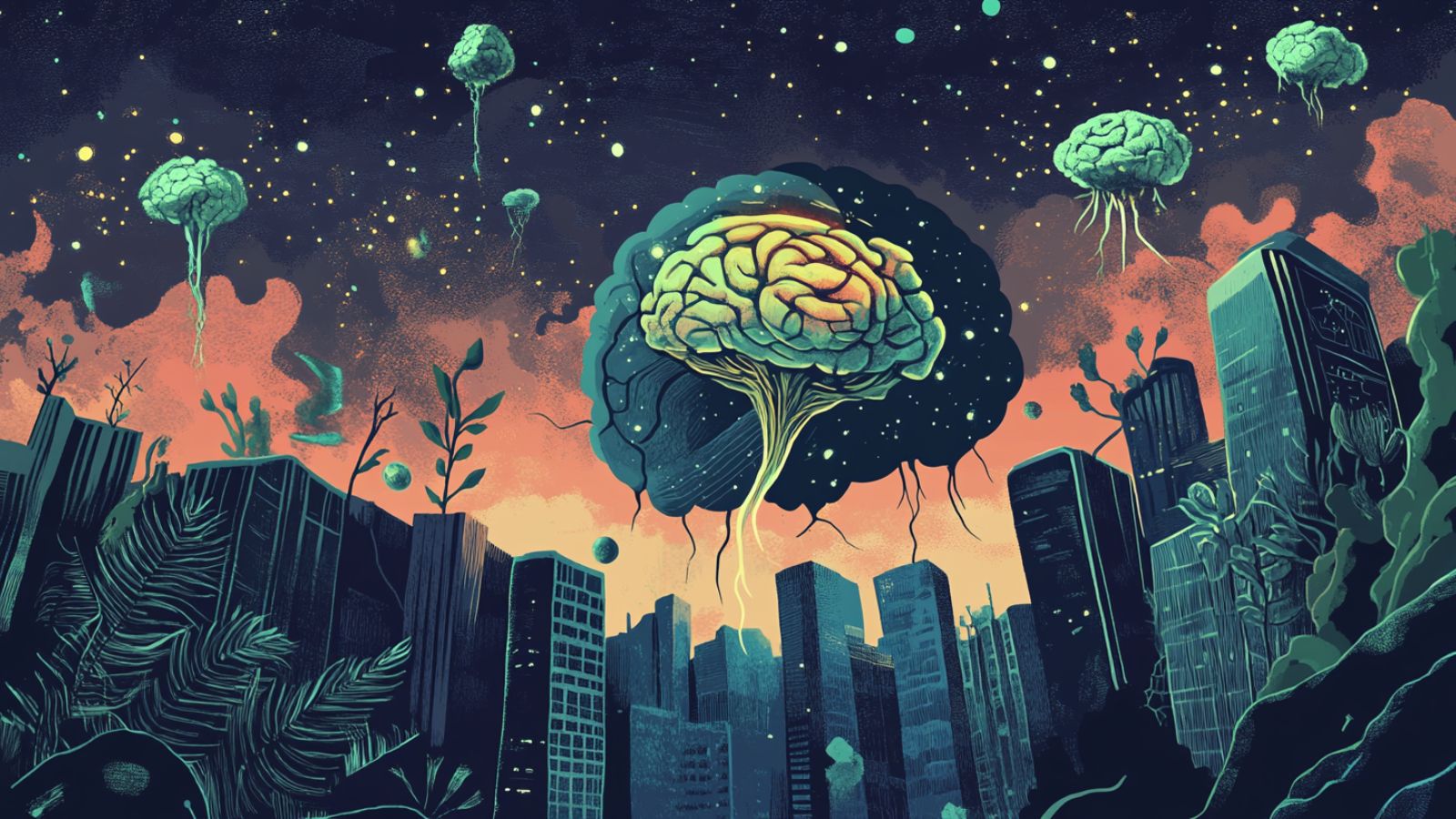
Mycelium vs AI and the Revolutionary Future of Intelligence
Both mycelium and AI challenge our perception of intelligence—one through organic networks, the other through synthetic computation. Psychedelics may hold the key to uniting both, acting as a bridge between natural and digital intelligence. The simultaneous rise of psychedelic exploration, revolutionary technology, and a deeper understanding of mycelial systems suggests that we may be stepping into a new era of consciousness—one where we finally recognize that intelligence is not confined to the human brain but spread across multiple dimensions of reality.
Are AI and mycelium simply different expressions of the same universal intelligence? Perhaps the timely re-emergence of psychedelics is simply a relevant tool for personal examination in order to have a more meaningful relationship with technology. As we catapult ourselves obsessively into the unknowns of machine intelligence, the question is no longer if this intelligence is evolving—but rather, are we as humans willing to evolve our intelligence alongside it?
